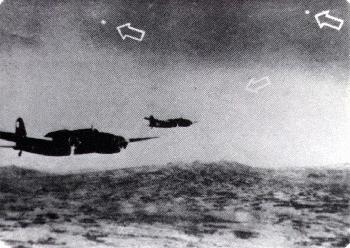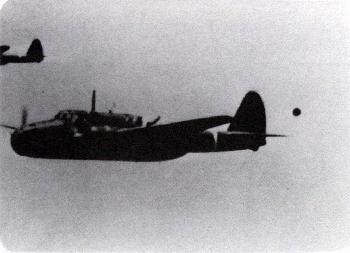 INTERNATIONAL | |
|
VIRTUAL PIANO, GUITAR and DRUMS
|
NEWS FROM AROUND THE WORLD
 In 1950, Edward W. Ludwig of Stockton, Calif., recalled this very strange story: "It happened in the last week of June 1944. The small Coast Guard-manned cargo vessel, of which I was executive officer, was approaching the tiny island of Plamyra, about 800 miles southeast of Hawaii... Suddenly the atmosphere of calm was shattered by a crackling radio message telling us that a Navy patrol plane had been lost at sea. Plamyra naval authorities appealed for our assistance in the search. "So we cruised back and forth, shouting into the black still night, playing our searchlight beams over the dark waters. We found nothing. Not even a scrap of floating debris or spot of oil to indicate where the plane had crashed. Twenty-four hours later we anchored in the lagoon-harbor of Palmyra, weary, our minds numbed by the tragedy. "That midnight I was on watch on our ship's bridge. Suddenly I glimpsed what first appeared to be a brilliant star, high in the dark sky over the island. As I watched, the light began to swell like a balloon and to come closer. I grabbed my binoculars, hoping for an instant that teh lost plane might be returning. "But I soon saw that the object in the sky was neither plane nor star. It was definitely round, a sphere hovering above me, motionless and silent, and at least five times as bright as the most brilliant star. The sphere began to move with almost imperceptible slowness. Then it stopped... For half an hour the light continued its slow, purposeful maneuvers until it covered an area of approximately 90 degrees. At last it headed northward, away from the island and in the direction where the plane had been lost. "The following morning I made inquiries, my mind toying with the thought that
the two incidents--the sphere and the lost plane--might be related. The
Naval lieutenant in charge told me that absolutely no aircraft had been aloft
that night and that no Japanese could possible be within 1,000 miles.
"He was extremely puzzled by the problem of the missing plane. Its radio
direction finder, he believed, had somehow malfunctioned, resulting in a
reversal of directions. But this theory, of course, would not explain why
two experienced pilots, familiar with the area, would fly directly into the
setting sun, away from the island, instead of in the opposite and correct
direction. I will never forget the lieutenant's final words. 'Perhaps,'
he suggested, 'the inhabitants of the strange sphere wanted specimens'."
 Admittedly in this instance any connection between the plane disappearance and the UFO is purely speculative, but Ludwig's account is interesting in view of the growing number of aircraft disappearances in which UFOs seem to be connected. The Kinross Air Force Base incident of Nov. 23, 1953, is the most famous of these cases. Shortly after midnight on Aug. 10, 1944, a B-29 was returning to Ceylon after a bombing mission over Palembang, Sumatra, when, as the pilot said "my copilot reported a strange object pacing us about 500 yards off the starboard wing. At that distance it appeared as a sperical object, probably five or six feet in diameter, of a very bright or intense red or orange in color. It seemed to have a halo effect. "My gunner reported it coming in from about the five o'clock position at our level. It seemed to throb or vibrate constantly. Assuming it was some kind of radio-controlled object sent to pace us, I went into evasive action, changing direction constantly, as much as 90 degrees and altitude about 2,000 feet. It followed our every maneuver for about eight minutes, always holding a position about 500 yards out and about two o'clock in relation to the plane. When it left, it made an abrupt 90 degree turn; accelerating rapidly, it disappeared into the overcast." Late in August, during the Battle of Brest in France, a UFO was seen by two men of the 175th Infantry Regiment. As members of a mine-laying platoon, they were entrenched a few thousand yards outside the city waiting for the Germans to launch a counterattack. The night was clear and quiet. "I saw this craft travelling no faster than a Piper Cub on a straight course," one of them told NICAP years later; he asked that his name not be published. "When I got over the shock of seeing this silent aircraft, I tapped Sergeant Ness on the shoulder, motioning for him to look up... When he looked skyward, he leaped to his feet to stare at this pehnomenon... Both of us were so awed, we forgot the war. If you knew Sergeant Ness as I knew him, you would know that he was too clever a combat soldier to stand up, even at night, near the enemy. So it had to be awesome. "I swear to God, it was the same as a railroad boxcar, retangular not cylindrical... It seemed five times as large as a boxcar... I looked closely for evidence of propellors, wings, or other protruding devices, but saw none on the three edges visible to us. There was absolutely no noise from it. It traveled at no more than 90 miles per hour. We had a long look at it before it vanished over the sea. Neither the German nor the American antiaircraft batteries opened fire..." For a brief moment the UFO passed across the surface of the moon and blotted it out. It finally vanished out to sea. (Amazingly, a strikingly similar object was observed in Apache, Okla., that October. The witness, Robert Spearman, had just returned from a fishing trip and was standing on his front porch when a "rushing wind sound" made him look up into the midday sky. There he saw a "silver train--like a streamlined passenger train--of our make with about nine coaches with landing gear that looked like inflated pillow-like wheels for soft landing... It traveled from east to west with a swish sound." Moving low and "very fast," it was visible for 10 minutes. It passed behind Spearman's 60-foot windmill about 100 yeards to the south of the house before disappearing.) Another UFO appeared over Sumatra in September. The witnesses, members of the Japanese Imperial Navy, thought the object was the size of a B-29 at 8,000 feet. It was white, egg-shaped, and brilliant. In 1958 Carson Yorke, who in 1944 was a lance corporal with the first Canadian Army fighting in northwestern Europe, recalled this sighting: "This occured in September 1944, just outside Antwerp, Belgium, which the Germans were bombarding at the time with V-2 rockets. At about nine p.m. I stepped out of my vehicle and on looking upward saw a glowing globe traveling from the direction of the front line toward Antwerp. It seemed to be about three or four feet in diameter and looked as though it was cloudy glass with a light inside. It gave [off] a soft white glow. Its altitude seemed to be about 40 feet, speed about 30 miles per hour, and there was no sound of any sort. "I noted that the object was not simply drifting with the wind but was obviously powered and controlled. Immediately [after] it had gone out of view it was followed by another which in turn was followed by five others in all. "During this time I called some other men out to see so the objects were observed by about five men. We weren't very impressed at the time because the Germans were using so many new weapons against us, such as the V-1 and V-2, so we assumed that these were simply some new sort of device of theirs. Also, remember that these objects were apparently following the same course V-2s which were falling on Antwerp regularly at the time, one every few minutes if I remember correctly." Near Weert, in southeastern Holland, half a dozen men spotted a "brillant point of light" at 9:30 one clear October evening. They quickly notified their commander, Capt. J.B. Douglas, Jr., who studied it through binoculars, noting that "the object appeared slightly larger and more brilliant--just as a planet would when viewed through field glasses." Passing slightly to the south and directly above the witnesses, it remained in sight for about 45 minutes. All during 1944-45 Allied airmen over Germany encountered what B-17 pilot Charles Odom described as "crystal balls", clear, about the size of basketballs." They would approach to within 300 feet of the bomber formation, "then would seem to become magnetized to our formation and fly alongside... After a while, they would peel off like a plane and leave." Mostly they were seen at night but some airmen reported spotting them during daylight hours. Over the Rhine Valley early one November evening in 1944, Lt. Henry Giblin and his radar observer, Lt. Walter Cleary, sighted a "huge red light" 1,000 feet above them (they were flying at 1,000 feet). The object was moving at about 200 miles per hour. About the same time two other airmen encountered a "glowing red object" which shot up vertically, turned over, and plunged into a steep dive. The witnesses were sure the thing was under intelligent control. Later that month, the Lincoln and Welland Regiment of the Canadian Army, stationed south of the Maas River, watched a star-like object cross the night sky toward the east. After 20 minutes is disappeared. About eight or 10 bright orange lights startled the crew of an American aircraft connected with the 415th Night Fighter Squadron as the plane cruised the Rhine River area north of Strasbourg one November night. Curiously, the lights, which were moving across the sky at remendous speed, did not show up on either ground or aircraft radar. The pilot, Lt. Ed Schlueter, banked into them expecting a dogfight, but much to his astonishment the objects completely disappeared, only to reappear seconds later. After five minutes the lights were gone. According to Maj. William D. Leet, "My B-17 crew and I were kept company by a 'foo fighter,' a small amber disc, all the way from Klagenfurt, Austria, to the Adriatic Sea. This occured on a 'lone wolf' mission at night, as I recall, in December 1944 in the 15th Air Force, 5th Wing, 2nd Bomb Group. The intelligence officer who debriefed us stated that it was a new German fighter but could not explain why it did not fire at us or, if it was reporting our heading, altitude, and airspeed, why we did not receive antiaircraft fire." BOOKMARK www.digestezine.com |